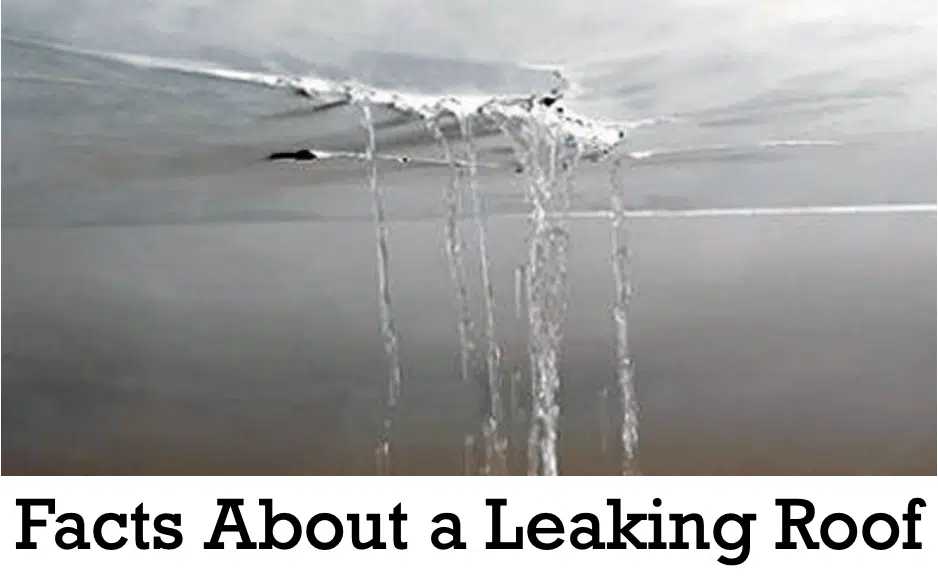Facts About a Leaking Roof

Facts about a leaking roof from Louisiana Roofing Contractor. When a roof starts leaking, you might be tempted to ignore it and simply place a bucket under the drip until you can get someone in to fix it. But this is never a good idea. A leaking roof is much more than just a nuisance: it’s a gateway to major home damage, particularly if they go unnoticed for a long period of time.
If you find yourself staring at your ceiling because of an annoying drip, don’t ignore that roof leak just yet! Keep reading to learn what you need to know about a leaking roof and the best way to deal with it.
Common Signs of a Leaking Roof
For a homeowner with little experience, it can be difficult to tell if a roof is leaking or if another problem is occurring.
Luckily, there are some tell-tale signs that a roof is leaking. Look out for the following next time you’re walking around your house:
- Water stains on your ceiling or walls
- A sagging ceiling and roof decking
- Dampness in your attic
- Peeling paint on walls, ceilings, and crown molding
- Buckling shingles on the exterior of your home
- Molds and mildews on walls
While these signs can help you spot a leaking roof, identifying a leaking roof isn’t always straightforward as looking at these signs. There are many factors that can affect the condition of your roof, and it is important to consider all of them when determining whether your roof is leaking. In a nutshell, the best way to determine if your roof has leaks is by hiring a professional contractor like Roof Crafters to inspect your roof. With our professional roofers’ help, you’ll be able to identify any potential problems with your roof and correct them before they turn into bigger issues that could potentially cost you thousands of dollars in repairs.
Add Your Heading Text Here
Facts About a Leaking Roof
You might be able to procrastinate on mowing the lawn, but when it comes to roof leaks, you need to act fast. A leaky roof can spell bad news for your home and wallet. Here are facts about a leaking roof and why you should always take care of it right away:
Leaking Roofs Can Damage Your Home’s Structure
When your roof springs a leak, the water will seep into areas that it’s not meant to be in. Consequently, this can result in damage to your home’s structure as the water gets into wooden support structures in your house. Over time, this can cause them to rot or deteriorate, leading to costly repairs or worse, collapse. Water can also seep into electrical wiring and cause problems with the electrical system in your home, which is another safety hazard.
Roof Leaks Can Lead to Mold and Mildew
One of the most serious consequences of a leaking roof is the growth of mold. The dampness and dark conditions under your roof allow mold to grow, which can cause health issues for you and your family. This is a serious problem that requires expensive remediation services, so it’s best to avoid it altogether by getting leaks fixed as soon as possible.
Roof Leaks Cause Energy Bills to Spike
A leaky roof can allow heat or cool air to escape from your home. This means that your HVAC system must work harder to maintain the temperature of your home. Therefore, you will end up spending more on energy bills due to this wasted energy.
5. Wood Shingles
They are manufactured from wood, as their name shows. Manufacturers carve wood shingles into equal forms, which limits design options. These shingles may decay and mildew if you do not give them proper maintenance. Yet, homeowners appreciate how they look.
Wood shingles endure 15-50 years. It depends on the type of wood, how it is treated before installation, and the quality of installation and maintenance.
6. Wood Shake Shingles
Style is mostly the only difference between wood shakes and wood shingles. Roofing material producers use cedar to make shake shingles. Likewise, they saw off or manually split shakes while they trim shingles to match. Shakes made from logs seem more rustic than wood shingles.
Wood shake shingles are costlier and can last 30 to 40 years. However, its duration will depend on the type of wood, installation, and upkeep. Besides, they decay and mold as wood shingles do.
7. Clay Tiles
Clay is available in white, yellow, orange, and brown colors. They are durable. However, the density of the tiles varies depending on how long and how hot they were heated.
Clay tiles might cost two or three times as much as asphalt shingles. They are durable and long-lasting, eco-friendly, low-maintenance, and rot-and-mold resistant. But they are also costly, hard to install, brittle, heavy, and unsuitable for some roof slopes.
8. Concrete Tiles
Concrete tiles are cheaper than clay ones. They offer the look of clay tiles without the high cost.
Concrete tiles have a 50-year lifetime, are fire-resistant, low-maintenance, and rot-and-mold resistant. But, eventually, their hue fades. Like clay tiles, these are heavy and not appropriate for all roof slopes.
These are the first eight types of shingles on our list. As you can see, each one offers advantages and disadvantages. So, it’s up to you to choose the best for your property. However, you can count on a local and experienced roofing contractor to get guidance.
Is Your Roof Leaking? Let Louisiana Roof Crafters Fix It!
Roof leaks can be very damaging to your home and belongings. If you are seeing water damage, don’t wait until it becomes extensive! Roof Crafters can repair it for you before it turns into costly repairs. We can help you get your roof back into shipshape condition regardless of how severe the damage may be.
Contact Roof Crafters today at 985-241-8045 in Baton Rouge, Covington, Denham Springs, Hammond, Mandeville, and Slidell, LA for a free estimate and we’ll get your roof patched up in no time.




